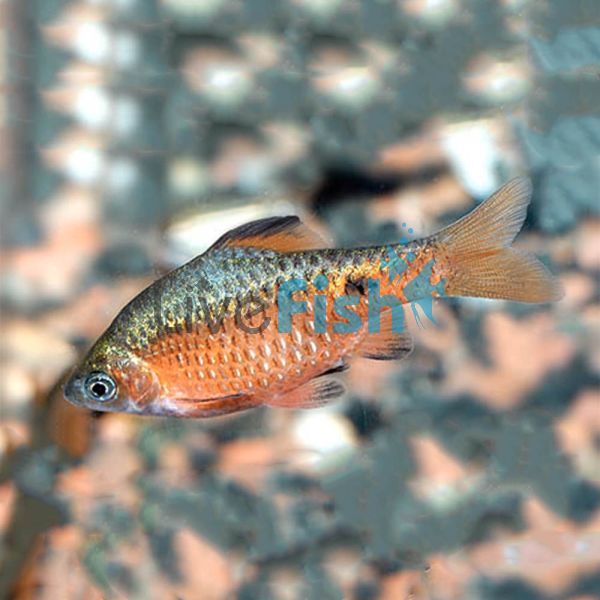Rosy Barb 5cm
The Rosy Barb is an often overlooked but fantastic beginner fish species. It has the amazing colours of a tropical tetra, is extremely hardy, stays small, and can live in cold-water environments as well. This makes the rosy barb great for a wide range of aquarium and outdoor pond settings for aquarists of all skill levels to enjoy. They make for a great alternative to goldfish which are often falsely recommended as beginner fish to new aquarists, the best thing is that rosy barbs encompass a lot of what is loved in goldfish whilst still adding their unique flair.
- Buy 6 for $7.34 each and save 10%
- Buy 12 for $6.52 each and save 20%
Rosy Barb
The Rosy Barb is an often overlooked but fantastic beginner fish species. It has the amazing colours of a tropical tetra, is extremely hardy, stays small, and can live in cold-water environments as well. This makes the rosy barb great for a wide range of aquarium and outdoor pond settings for aquarists of all skill levels to enjoy. They make for a great alternative to goldfish which are often falsely recommended as beginner fish to new aquarists, the best thing is that rosy barbs encompass a lot of what is loved in goldfish whilst still adding their unique flair.
Rosy Barbs offer a nice dynamic in the aquarium when comparing males to females. Male rosy barbs reflect their name the best, they have a rose gold or orange colour that stands on their body whereas females are solid gold. In both males and females, the colours can also have mixes of silver, white and green tinges come through as well. Along with that, the rosy barb has tints of black on the fins and a characteristic black spot on the tail.
Rosy Barbs can really range in the temperature of their environment. They ideally need to be kept between 18 - 24 degrees but can easily handle a few degrees higher or lower. They also remain fairly small at 8-10 cm which means they can be enjoyed in smaller aquariums as well. Breeding rosy barbs are possible where females will scatter eggs and males will then follow and fertilize. Rosy barbs originally come from the southern parts of Asia.
Tank Recommendations for Rosy Barb
Being a small and relatively easy to care for fish the rosy barb can be kept in smaller aquariums with the minimum being 75 liters.
This aquarium size allows for a decent school of these barbs along with other community fish if required. Rosy barbs ideally need to be kept in a group of 5 or more to avoid their potential fin nipping behavior with other tank mates.
They will appreciate a well-planted aquarium but will have little concern over the substrate or hardscape choices. These are also fish that look amazing against a darker aquarium background with a higher level of red in the lighting used for the tank.
Suitable Tank Buddies
The Rosy Barbs are peaceful fish however they are well known to be fin nippers. This behavior however is really minimal when they are kept in a decent school however long-finned or slow-moving species should be kept with caution.
Usually Compatible
Tiger Barbs, black neon tetras, angelfish, paradise fish, giant danios, and similar species.
Sometimes Compatible
Swordtails, long-finned barb or tetra varieties such as long fin cherry barbs, and slow-moving fish species like chocolate gourami.
Rarely Compatible
Neon tetra, betta, guppies, and similar slow-moving or excessive finned fish. Bubble-eyed goldfish such as black moor is also at risk of having regions around their eye bitten.
Feeding your Rosy Barb
Rosy Barbs are a very easy fish to feed. They will take a wide range of pellets, flakes, and frozen foods. Just like any fish though they should be fed a varied diet with a mix of different foods.
The ideal diet would be a good quality micro slow sinking pellet or crushed flake, supplemented with frozen bloodworms or black worms or even live foods like baby brine shrimp or micro worms.
| Scientific Name | Puntius Conchonius |
|---|---|
| Care Level | Easy |
| Common Names | Rosy barb |
| Diet | Omnivore |
| Fish Family | Cyprinidae |
| Lifespan (years) | 5 |
| Max. Length (cm) | 10 |
| Min. Tank Volume (l) | 75 Liters |
| Origin | Asia |
| Reef Safe | Yes |
| Sociability | Peaceful |
| Venomous | No |
| Water Conditions | 18-24° C, pH 6.0-7.0 |




